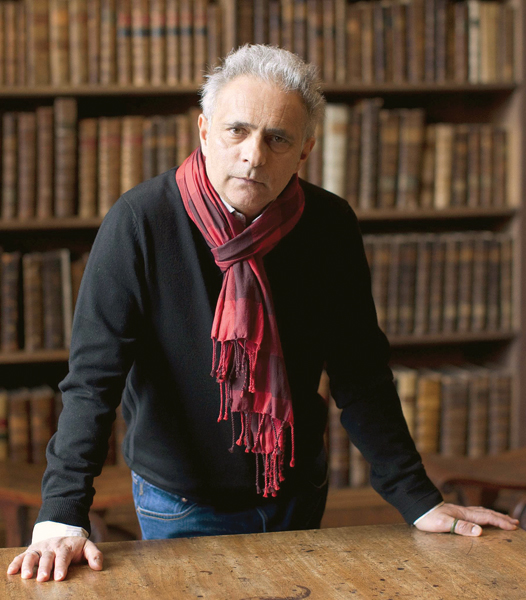
Although it is not a triumph, it contains inspired moments of black humour and some nod-worthy aphorisms that are Kureishi’s trademark. It loses out completely on basic writing devices, such as characters that are dull or annoyingly incongruous and dialogues that make the reader cringe. Instead of a cohesive background, the novel focuses on the dark side of lovemaking addiction, glorified in the artist’s livery.

The book is available at The Last Word for Rs1,995.
The Last Word is an audacious reimagining of the relationship between the controversial author VS Naipaul and his biographer Patrick French. But given that Kureishi denies this, despite the overwhelmingly numerous parallels between his protagonist Mamoon Azam and Naipul, it means that the only explanation for this disappointment of a novel is uninspired laziness.
The eager beaver biographer, Harry, arrives in rural Somerset, to live with his subject Mamoon and his flighty Italian wife, Liana, in their country mansion. Liana lives the legacy of Sophia Tolstoy but aspires to be the American writer Gertrude Stein in glamorous London. Since her husband’s royalties cannot achieve that, she decides to turn Mamoon into a brand through his biography. There is a hilarious exchange in the book in which Mamoon asks Liana if she means a brand like Heinz ketchup, and she replies with brand Roald Dahl.
The two bulwarks of this work are Mamoon and Liana. Mamoon lives two lives; one of a disillusioned writer whose inability to live up to his younger glory frustrates him endlessly and that of a cranky old bugger, complaining about the cold, his knees, imminent death and avoiding Harry’s questions by “running to the hills.” Liana, on the other hand, moves the story forward. She is the catalyst and the life of this otherwise bland narrative.
An unnecessarily forced exercise in psychoanalysis; sex is an overdone preoccupation in the novel. The point seems to be not so much that sexuality is important, but that it is only the forbidden form that inspires the artist and forms the crux of his ‘elevated’ thought processes. The shame is that Harry’s inner thoughts form the essence of this book, but are devoid of any real moving sentiment.
Remembering the past, and re-writing it in the present gives the novel a semblance of a central thought. The act of biography is very important, and there are moments between Harry and Mamoon that sparkle with humour and at other times are very moving. For instance, an exchange about literature roars with life, where Harry calls Mamoon’s reaction to his contemporaries, “more road rage than literary criticism.” The novel touches on the politics of biography and the dynamics between biographer and the subject and what it means to narrate a life still in progress. There are some valuable reflections from Mamoon about the teleological nature of the narrative, especially with regard to the biography — in the sense that everything the biographer finds must fit into a narrative which is written with a fixed beginning and end points.
There is no room for idiosyncrasies or irregularities in these pre-ordained narratives, and especially not for open ends. Finally, there is a turning of the tables at the end, which is a flash of brilliance in this otherwise uninspired work. There is little to redeem this book, but if you read it, do so simply to witness the undoing of a writer — Mamoon or Kureishi — the choice is yours.
Anam Haq has a degree in literature and runs her food business.
Published in The Express Tribune, Sunday Magazine, March 23rd, 2014.


1725443747-0/Untitled-design-(5)1725443747-0-165x106.webp)














COMMENTS
Comments are moderated and generally will be posted if they are on-topic and not abusive.
For more information, please see our Comments FAQ